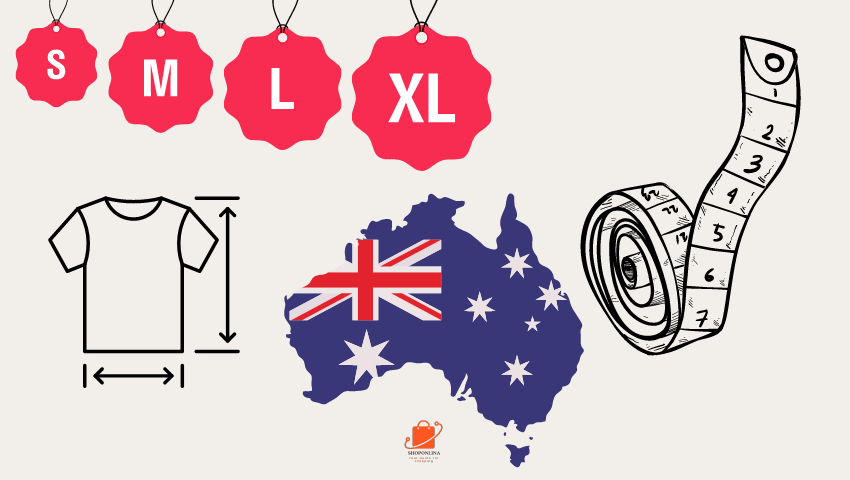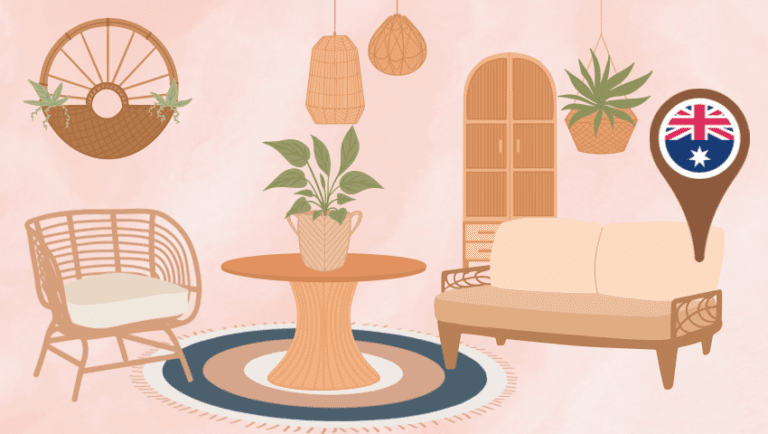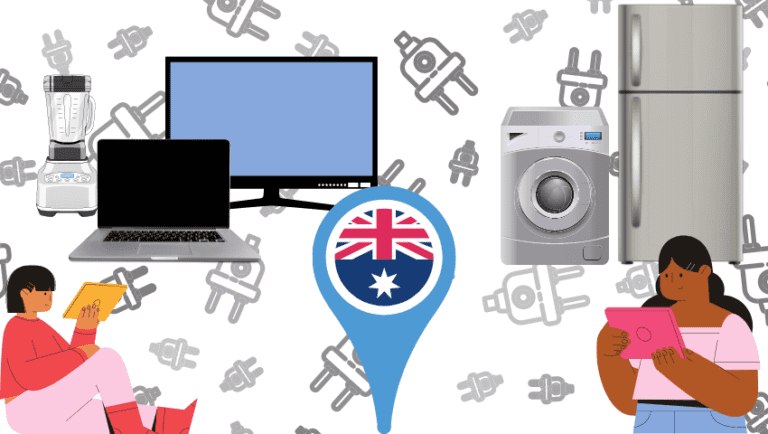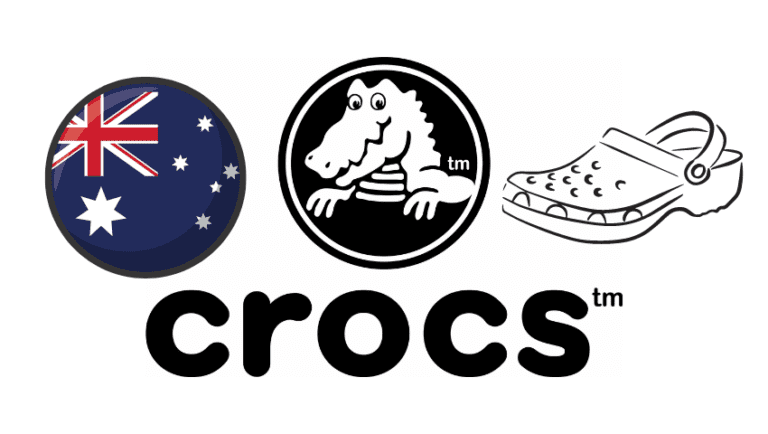Australian Clothing Size Charts … Your Complete Guide

Table of Contents
Understanding Australian Clothing Size Charts can be difficult, especially when compared to other international size charts.
This thorough reference includes all you need to know about clothing sizes in Australia for men, women, children, and newborns.

Introduction to Australian Clothing Size Charts
The Australian apparel industry has its own sizing system that differs significantly from the size charts used in the United States, the United Kingdom, and Europe. Some general considerations are as follows:
- Sizes are labeled numerically rather than small/medium/large, for example.
- Women’s sizes are frequently smaller than those of the United States or the United Kingdom. A size 12 AU corresponds to a size 8-10 US.
- Men’s sizes are more in line with international standards. A men’s size L in Australia is comparable to a men’s size L in the United States.
- Because there are differences between brands, it is usually a good idea to consult sizing charts.
- Australian sizes vary per state as well. Queensland sizing is sometimes a size larger than that of New South Wales or Victoria.
Why Australian Sizes Differ from International Sizing
There are a few reasons why Australian sizing is unique:
- Australia has always had a lower population than the United States and Europe, therefore sizing was scaled down proportionately.
- Differences in cultural body shape: Australians are often slimmer than North Americans, which affects measures.
- Brand autonomy: Australian brands have more freedom in determining their own sizing scales rather than adhering to international standards.
- Lack of standardization: There is no governmental agency in Australia that regulates clothing sizes.
Women’s Clothing Size Charts in Australia
Women’s sizes in Australia are generally smaller than those in the United States, the United Kingdom, and Europe. When purchasing brands from these regions, it is critical to consult the size chart.
Australian Women’s Standard Sizing
The following is the typical women’s size chart used by the majority of major Australian apparel brands:
| Australian Size | AU Clothing Size | Body Measurements |
|---|---|---|
| 2 | XXS | Bust: 78-81cm, Waist: 61-64cm, Hips: 84-87cm |
| 4 | XS | Bust: 81-84cm, Waist: 64-67cm, Hips: 87-90cm |
| 6 | S | Bust: 84-87cm, Waist: 67-70cm, Hips: 90-93cm |
| 8 | M | Bust: 87-91cm, Waist: 70-74cm, Hips: 93-97cm |
| 10 | L | Bust: 91-96cm, Waist: 74-79cm, Hips: 97-102cm |
| 12 | XL | Bust: 96-102cm, Waist: 79-84cm, Hips: 102-107cm |
| 14 | XXL | Bust: 102-112cm, Waist: 84-94cm, Hips: 107-117cm |
| 16 | 3XL | Bust: 112-124cm, Waist: 94-104cm, Hips: 117-127cm |
| 18 | 4XL | Bust: 124-134cm, Waist: 104-114cm, Hips: 127-137cm |
| 20 | 5XL | Bust: 134-144cm, Waist: 114-124cm, Hips: 137-147cm |
*Bust, waist and hip measurements shown are a guide only
Australian Women’s Plus Sizes
Numerous brands also provide plus size options for those with curvier figures:
| Australian Plus Size | Body Measurements |
|---|---|
| 14 | Bust: 107-112cm, Waist: 94-99cm, Hips: 114-119cm |
| 16 | Bust: 112-117cm, Waist: 99-104cm, Hips: 119-124cm |
| 18 | Bust: 117-123cm, Waist: 104-109cm, Hips: 124-130cm |
| 20 | Bust: 123-130cm, Waist: 109-116cm, Hips: 130-137cm |
| 22 | Bust: 130-137cm, Waist: 116-123cm, Hips: 137-144cm |
| 24 | Bust: 137-145cm, Waist: 123-131cm, Hips: 144-152cm |
| 26 | Bust: 145-153cm, Waist: 131-140cm, Hips: 152-160cm |
*Measurements shown are approximate for standard plus sizes
Australian Women’s Petite Sizes
Petite apparel is designed for people who are 5’3″ (160cm) or shorter. Conversions for petite sizes:
- Size 6P = Size 4
- Size 8P = Size 6
- Size 10P = Size 8
- Size 12P = Size 10
- Size 14P = Size 12
- Size 16P = Size 14
*Note size chart proportions remain the same, just scaled down for shorter heights
Australian Women’s Tall Sizes
Tall clothing is designed for heights 5’9″ (175cm) and above. Common tall size conversions:
- Size 6T = Size 8
- Size 8T = Size 10
- Size 10T = Size 12
- Size 12T = Size 14
- Size 14T = Size 16
*As with petite, proportions remain the same but lengths and measurements are longer
Tips for Finding Right Australian Women’s Size
- Compare your breast, waist, and hip circumferences to the size chart.
- For Australian sizes, consult the garment care label.
- Check the brand’s own sizing chart as ranges can differ.
- For sizing, start with similar brands/styles.
- Size up for tops and dresses, and size down for pants and skirts.
- If you are in between sizes, order one size up or down.
Men’s Clothing Size Charts in Australia
Men’s apparel in Australia is sized using normal alpha sizing – S, M, L, XL, and so on. Size is generally consistent with worldwide charts, however there are notable exceptions.
Australian Men’s Standard Sizing
| Australian Size | Chest Size | Waist Size | Hip Size |
|---|---|---|---|
| XXS | 33-35″ / 84-89cm | 27-29″ / 69-74cm | 34-36″ / 86-91cm |
| XS | 35-37″ / 89-94cm | 29-31″ / 74-79cm | 36-38″ / 91-97cm |
| S | 37-39″ / 94-99cm | 31-33″ / 79-84cm | 38-40″ / 97-102cm |
| M | 39-41″ / 99-104cm | 33-35″ / 84-89cm | 40-42″ / 102-107cm |
| L | 41-43″ / 104-109cm | 35-37″ / 89-94cm | 42-44″ / 107-112cm |
| XL | 43-46″ / 109-117cm | 37-40″ / 94-102cm | 44-46″ / 112-117cm |
| XXL | 46-49″ / 117-124cm | 40-43″ / 102-109cm | 46-49″ / 117-124cm |
| 3XL | 49-52″ / 124-132cm | 43-46″ / 109-117cm | 49-52″ / 124-132cm |
*Chest, waist and hip measurements shown are a guide only
Tips for Finding Right Australian Men’s Size
- Measure the circumference of your neck, chest, waist, and hips.
- On clothing labels, look for alpha size.
- Check the brand’s sizing chart.
- Australian men’s jeans are sized differently – see a jeans size chart.
- Size up for shirts and blouses, and size down for suits and formal clothing.
- If you are in between sizes, order one size up or down.
- Tall and short sizes are offered for a better fit.
Australian Children’s Clothing Size Charts
Clothing sizes for Australian kids differ from US and UK sizes, with variations by gender, age and brand.
Girls Sizes
Girls clothing uses numerical sizes, increasing with age and height. Standard size chart:
| Age | Height | Chest | Waist | Hips | Australian Size |
|---|---|---|---|---|---|
| 2-3 years | 91-99cm | 54-56cm | 53-55cm | 59-61cm | 2 |
| 3-4 years | 99-110cm | 56-59cm | 55-57cm | 61-64cm | 3 |
| 4-5 years | 110-119cm | 59-62cm | 57-59cm | 64-67cm | 4 |
| 5-6 years | 119-125cm | 62-66cm | 59-62cm | 67-71cm | 5 |
| 7-8 years | 125-132cm | 66-70cm | 62-66cm | 71-75cm | 6 |
| 8-9 years | 132-140cm | 70-75cm | 66-70cm | 75-80cm | 7 |
| 10-11 years | 140-150cm | 75-81cm | 70-75cm | 80-86cm | 8 |
| 12-13 years | 150-162cm | 81-87cm | 75-81cm | 86-91cm | 10 |
| 14-15 years | 162-170cm | 87-94cm | 81-87cm | 91-97cm | 12 |
Boys Sizes
Boys sizes are also numerical, corresponding to age, height and chest measurements:
| Age | Height | Chest | Waist | Hips | Australian Size |
|---|---|---|---|---|---|
| 2-3 years | 91-99cm | 53-55cm | 52-54cm | 58-59cm | 2 |
| 3-4 years | 99-110cm | 55-57cm | 54-55cm | 59-61cm | 3 |
| 4-5 years | 110-119cm | 57-59cm | 55-56cm | 61-63cm | 4 |
| 5-6 years | 119-125cm | 59-61cm | 56-58cm | 63-65cm | 5 |
| 7-8 years | 125-132cm | 61-64cm | 58-60cm | 65-68cm | 6 |
| 8-9 years | 132-140cm | 64-68cm | 60-63cm | 68-71cm | 7 |
| 10-11 years | 140-150cm | 68-74cm | 63-68cm | 71-76cm | 8 |
| 12-13 years | 150-162cm | 74-80cm | 68-74cm | 76-82cm | 10 |
| 14-15 years | 162-170cm | 80-86cm | 74-79cm | 82-88cm | 12 |
Unisex Kids Sizes
Some children’s brands use standard S/M/L sizing for unisex styles. Approximate age and height guides:
| Australian Size | Age Guide | Height Guide |
|---|---|---|
| 2 | 2-3 years | 91-99cm |
| 3 | 3-4 years | 99-110cm |
| 4 | 4-6 years | 110-125cm |
| 6 | 7-9 years | 125-140cm |
| 8 | 10-11 years | 140-150cm |
| 10 | 12-13 years | 150-162cm |
| 12 | 13-14 years | 162-170cm |
Tips for Australian Kids Sizes
- Check height and chest/waist measurements against size chart
- Look for numerical sizing on clothing labels
- Unisex ranges use S/M/L alpha sizing
- Size up for tops/dresses/jumpers
- Size down for pants/skirts to allow growth room
- Check brand’s specific size chart for variations
Australian Baby Clothing Size Charts
Babies grow quickly in the first 12 months, so most baby clothes use age as a guide for sizes. Some tips:
- 0-3 months for newborns
- 3-6 months from 3 months old
- 6-9 months from 6 months old
- 9-12 months from 9 months old
- 12-18 months for toddlers 1-1.5 years old
- 18-24 months for toddlers 1.5-2 years old
Actual chest, weight and height measurements vary significantly in babies and can’t be used as definitively for sizing. It’s best to base baby clothes sizes on the age recommendations from manufacturers.
Some baby clothes instead use kilograms for sizing. Common weight ranges are:
- 0000 = up to 3kg
- 000 = 3-6kg
- 00 = 6-9kg
- 0 = 9-12kg
- 1 = 12-18 months
Nappies also use weight sizing rather than ages.
Tips for Buying Baby Clothes
- Check labels for recommended age range
- Allow room for growth if between sizes
- Onesies and leggings can have more room to grow
- Don’t go by standard baby weight charts
- Buy various sizes in advance for the first 12 months
Finding the Right Australian Clothing Size
Shopping for clothes in Australian sizes may seem complicated at first, but there are a few tips to find your perfect fit:
- Refer to the standard size charts for your gender and match to your measurements
- Check clothing labels or brand websites for specific sizing guidance
- Size up for looser items like dresses, tops and outerwear
- Size down for tighter items like pants, leggings and formalwear
- Order one size up or down if you fall between two sizes
- Try similar styles from the brand first before purchasing new styles
With the help of these Australian clothing size charts, you can confidently shop brands from this region and always get the right fit. Let us know if you have any other questions!
Conclusion
Clothing sizing can be baffling sometimes, but hopefully this Australian size guide provides clarity on how sizing works in this region. If in doubt, always check the size chart and measure yourself for the best fitting clothes. Let us know if you have any other sizing questions!






